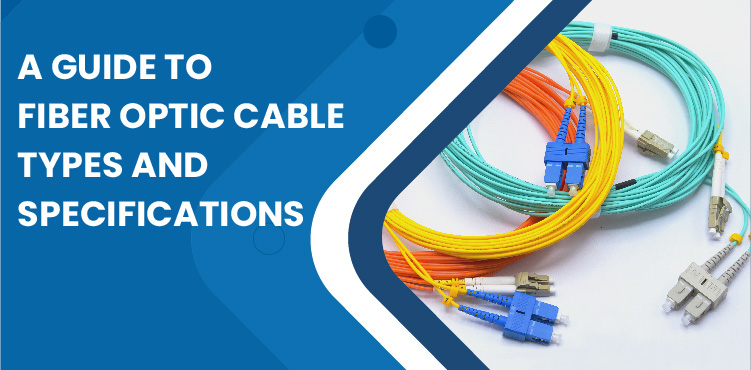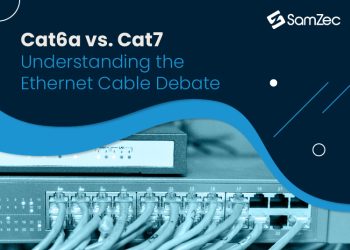When it comes to types of fiber optic cable, they are usually of three types: single-mode, multimode, and plastic optical fiber. The bulk fiber optic cable acts as a guide that lights from one of the cables (the end where it is introduced) to another end. The source of this light can be a laser or LED (light-emitting diode).
The light enters the cable in pulses but is converted back into digital ones and zeroes by a light-sensitive receiver (present on the other end). Just like ethernet cables, fiber optic cables are not immune to loss of signal strength. As far as a fiber-optic network cable is concerned, the signal loss occurs mainly due to the scattering and dispersion of light within the fiber optic cables. The risk of dispersion of light is directly proportional to the laser fluctuations; the faster it fluctuates, the bigger will be the risk of scattering or dispersion. Some manufacturers use repeaters — also known as light strengtheners — in certain applications to fix this issue.
Despite seeing a continuous drop in prices, the fiber optic cable remains more expensive than its copper counterparts. Also, the equipment needed to install the fiber optic cables is on the higher end.
Now let’s explore the types of fiber optic cables.
Single Mode Cable
Single Mode Fiber Optic Cable is that type of cable with a single strand of glass fiber with a diameter anywhere between 8.3 to 10 microns. As this is a single-mode fiber with extremely low diameter, only 1 mode will pass through it, typically 1550nm or 1331nm. Thanks to their extremely narrow diameter, single-mode fiber optic cable will have only one mode running in between 1550 nm to 1310mn. The single-mode cable has higher bandwidth capabilities, however, it needs a source for light with small spectral width. This wire is also called single-mode fiber, uni-molar fiber, and mono-made optical fiber.
As far as its usage is concerned, the cable is used in applications that send data at a multi-frequency. However, the single-mode fiber provides greater transmission rates and as much as up to fifty times more distance than the multimode fiber optic cables. As these cables are single-mode, its core is smaller, however, it costs more than the multi-mode. Thanks to its small core and single light wave, the distortion is eliminated resulting in minimum attenuation. The end product is the highest transmission speed any cable has yet to offer.
Multi-mode fiber optic cable
As far its inner construction of a multi-mode fiber optic cable is concerned, being a multi-mode cable, its diameter is at least five times greater than single-mode – ranging anywhere between 50 to 100 micron. In most cases, two fibers are used in a multi-mode fiber optic cable.
As far as its performance is concerned, the multi-mode fiber optic cable provides bandwidth capabilities of 10 to 100MBS – Gigabit over a distance ranging from 275 meters to 2 kilometers. When traveling through the multi-mode fiber optic cable, the light waves disperse into numerous modes or paths. The cable core is 850 or 1300nm. Typical diameters for a multi-mode fiber optic cable are 50, 62.5, and 100 micrometers. In longer cable runs, a single distortion erupts due to multiple paths of light. The signal distortion causes incomplete and unclear data transmission.
Ever since their first installation, the application of fiber optic network cable has been increasing at a rapid pace. If you want to buy fiber optic cable, you can rely on Newyork Cables. They are the best in the business with the whole process being customer-centric.




















